15 Ducks with White Chest (Names, Pictures, & ID Guides)
For many duck lovers, there are countless moments when you spot a duck and pause, wondering what species it could be. With so many duck species worldwide, it’s a common experience, especially when you factor in differences between males and females (sexual dimorphism) or changes in plumage across seasons.
But small details like head color, wing markings, bill shape, or chest color can offer surprisingly accurate clues. These features vary from species to species and are incredibly useful for identifying ducks more confidently.
Today, for example, let’s focus on ducks with white chests. How many can you name? You might be surprised by how many there are—but here are some of the most recognizable species you’re likely to spot with this distinctive feature.
- 1. Common Goldeneye (Male)
- 2. Barrow’s Goldeneye (Male)
- 3. Bufflehead (Male)
- 4. Northern Pintail (Male)
- 5. Northern Shoveler (Male)
- 6. Common Merganser (Male)
- 7. Common Shelduck (Male)
- 8. Hooded Merganser (Male)
- 9. Smew (Male)
- 10. Common Eider (Male)
- 11. King Eider
- 12. Swedish Blue Duck
- 13. Long-tailed Duck
- 14. Manky Mallards
- 15. Some Muscovy Ducks
1. Common Goldeneye (Male)
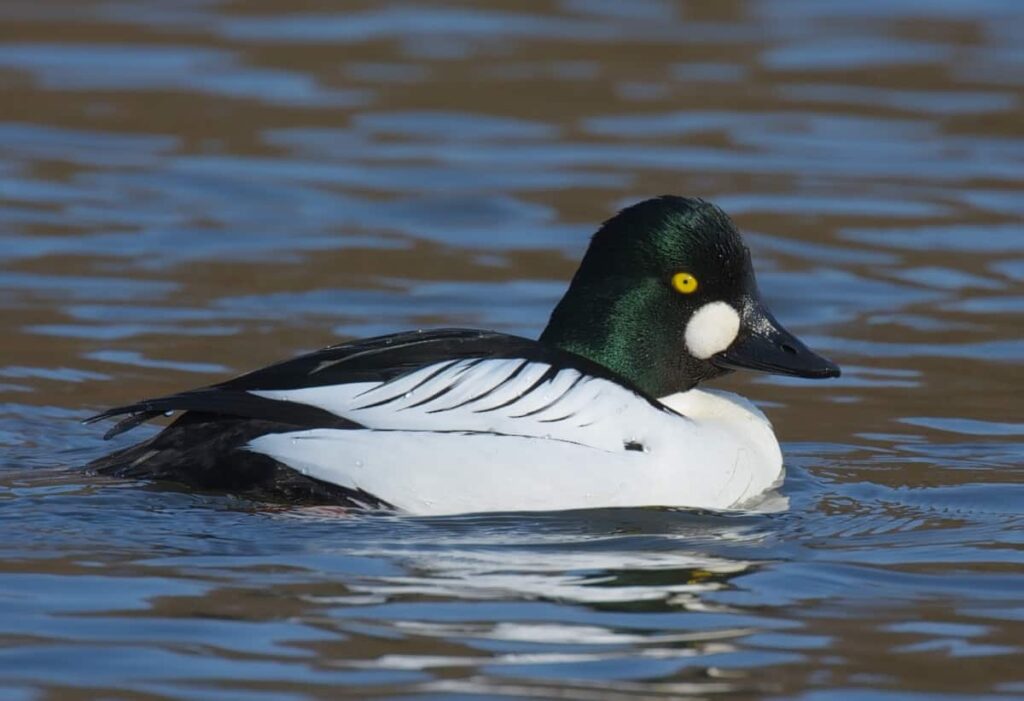
You’ll notice its white chest right away—it stands out sharply against the glossy green-black head and dark back. The white patch on the chest flows cleanly into the white sides, giving the Common Goldeneye a smart tuxedo-like look.
Beyond looks, this duck is known for its fast, whistling wingbeats in flight—so distinctive that hunters and birders call it the “whistler.” They nest in tree cavities, sometimes high above ground, and ducklings make a daring leap to the ground just a day after hatching.
2. Barrow’s Goldeneye (Male)
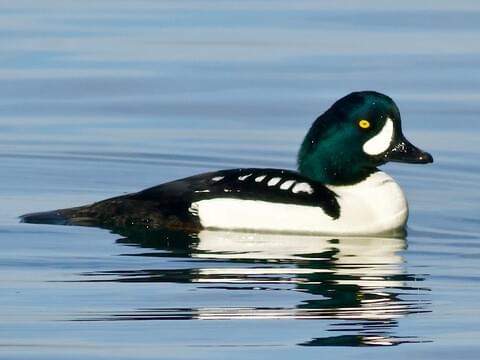
Unlike the Common Goldeneye, the male Barrow’s Goldeneye has a more rounded head and a purplish sheen, but the bright white chest is just as clean and striking. This white chest contrasts with black wings and patterned white shoulder patches.
A unique trait of this species is its breeding preference—it often nests near mountain lakes and cold forested regions, especially in Iceland, western North America, and parts of Scandinavia. Barrow’s Goldeneyes are also less common and more localized than Common Goldeneyes, making sightings a bit more special.
3. Bufflehead (Male)
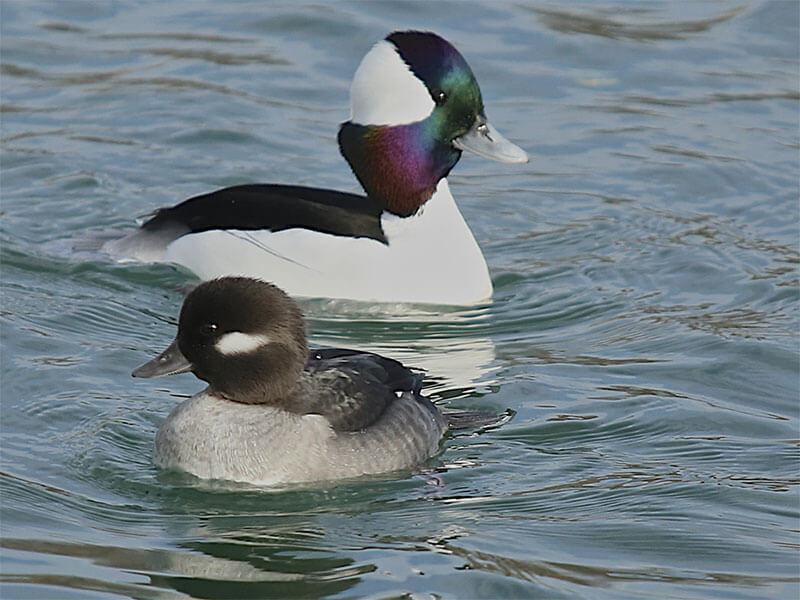
Small but eye-catching, the male Bufflehead has a bright white chest that extends up the sides and connects to glossy black upperparts. Combined with its large white head patch and small, round body, it’s a duck you don’t easily miss.
But what’s fascinating is their size—they’re one of the smallest diving ducks. Buffleheads often nest in old woodpecker holes, especially those made by Northern Flickers. Despite their tiny frame, they migrate impressive distances between Canada and the southern U.S. or coastal waters.
4. Northern Pintail (Male)
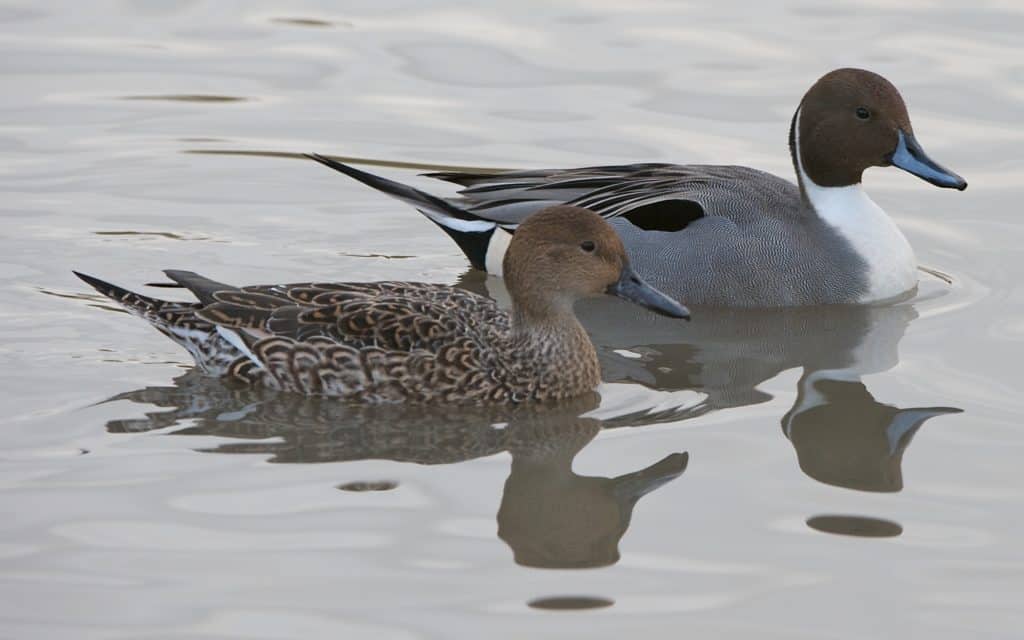
Graceful from head to tail, the male Northern Pintail shows a crisp white chest and neck that forms a long white stripe stretching up the side of its chocolate-brown head. This elegant white marking is one of its most defining features.
Aside from its beauty, Pintails are among the earliest ducks to migrate north for breeding in spring. They favor open wetlands, shallow lakes, and prairies. Unfortunately, they’ve been experiencing population declines due to habitat loss, making conservation efforts increasingly important.
5. Northern Shoveler (Male)
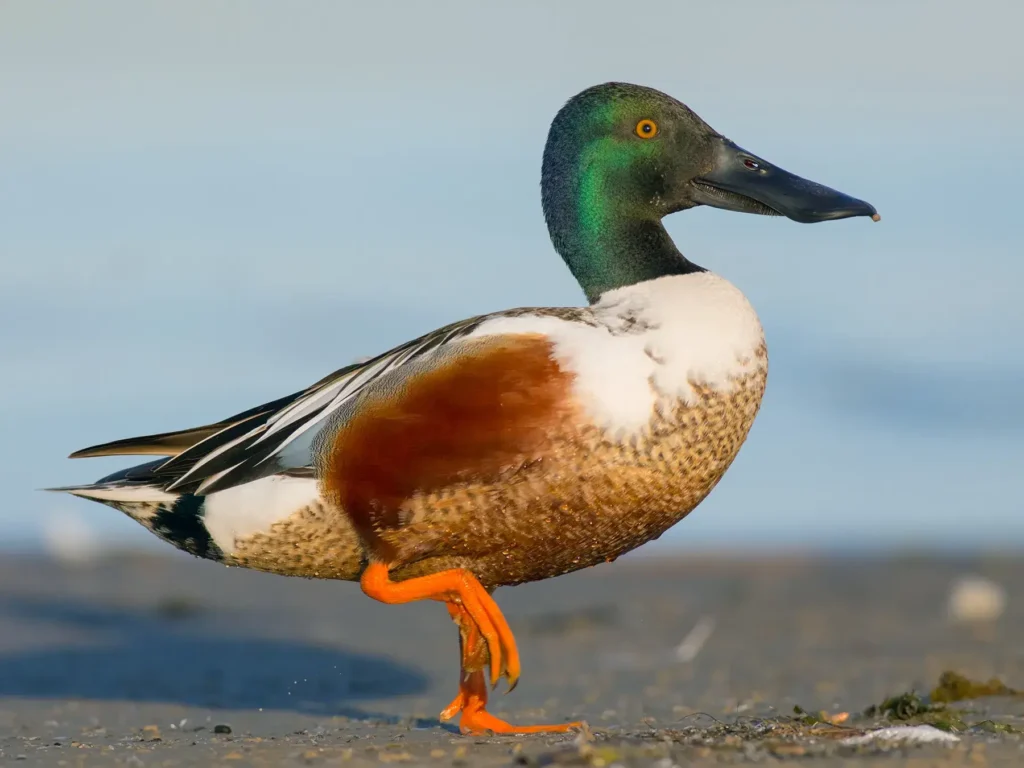
What immediately draws the eye is the male’s white chest, sitting neatly between its dark green head and rich chestnut sides. This white patch gives a sharp contrast that echoes the Mallard but with its own flair.
What sets this duck apart is its way of eating. Instead of tipping forward like most dabbling ducks, Northern Shovelers sweep their oversized, spoon-shaped bills across the water to filter out tiny insects and plants. When several feed together, they often spin in circles, creating whirlpools to stir food up from the water.
6. Common Merganser (Male)
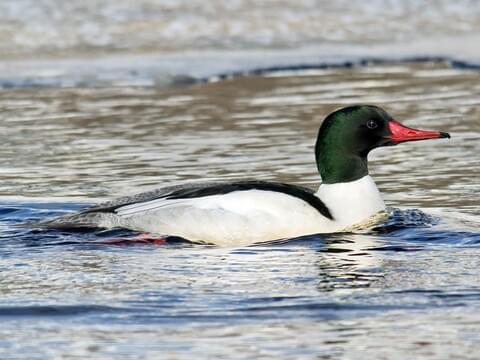
Dressed like it’s attending a winter ball, the male Common Merganser shows a pure white chest and underparts that stand out under its sleek dark green head and black back. Beyond its looks, this duck is a fish hunter. With sharp, serrated bills, Common Mergansers catch fish with precision. They nest in tree cavities near clear rivers and lakes. Chicks leap from the nest to the ground or water within a day of hatching—no hesitation.
7. Common Shelduck (Male)
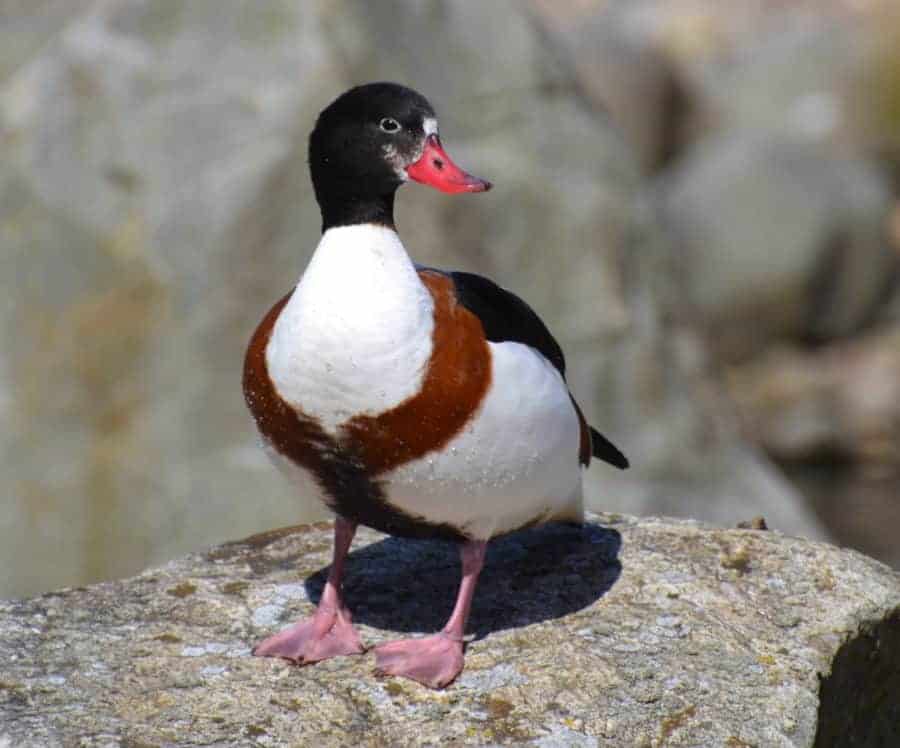
With a bold white chest and belly framed by a dark green head and a broad chestnut band across the breast, the Common Shelduck has a sharp, unmistakable look. One interesting things about these ducks are their choice of nesting spots. Instead of trees, they often lay their eggs in rabbit burrows, dunes, or holes in the ground. In coastal Europe, they gather in large flocks during molting, where they shed all flight feathers at once and become temporarily flightless.
8. Hooded Merganser (Male)
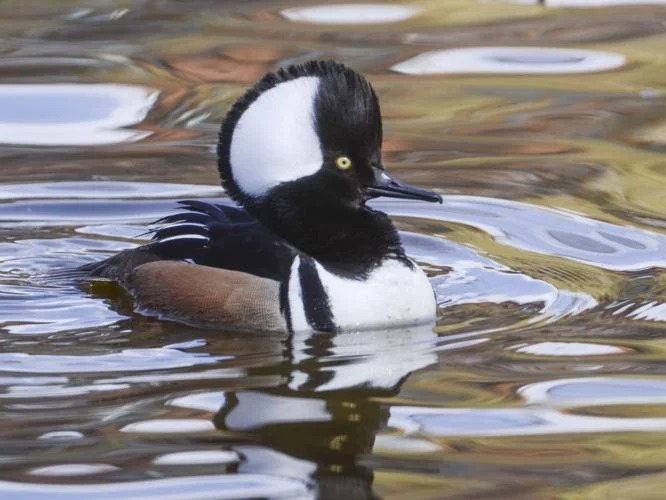
The male Hooded Merganser proudly shows off a white chest paired with dark sides and a striking fan-shaped white crest on its head. When the crest is raised, it looks like it’s wearing a helmet with a glowing white badge. Small but full of character, these ducks specialize in diving for fish and aquatic insects. They prefer wooded ponds and rivers and, like other mergansers, nest in tree cavities. Their golden-yellow eyes and quick dives make them favorites among birdwatchers.
9. Smew (Male)
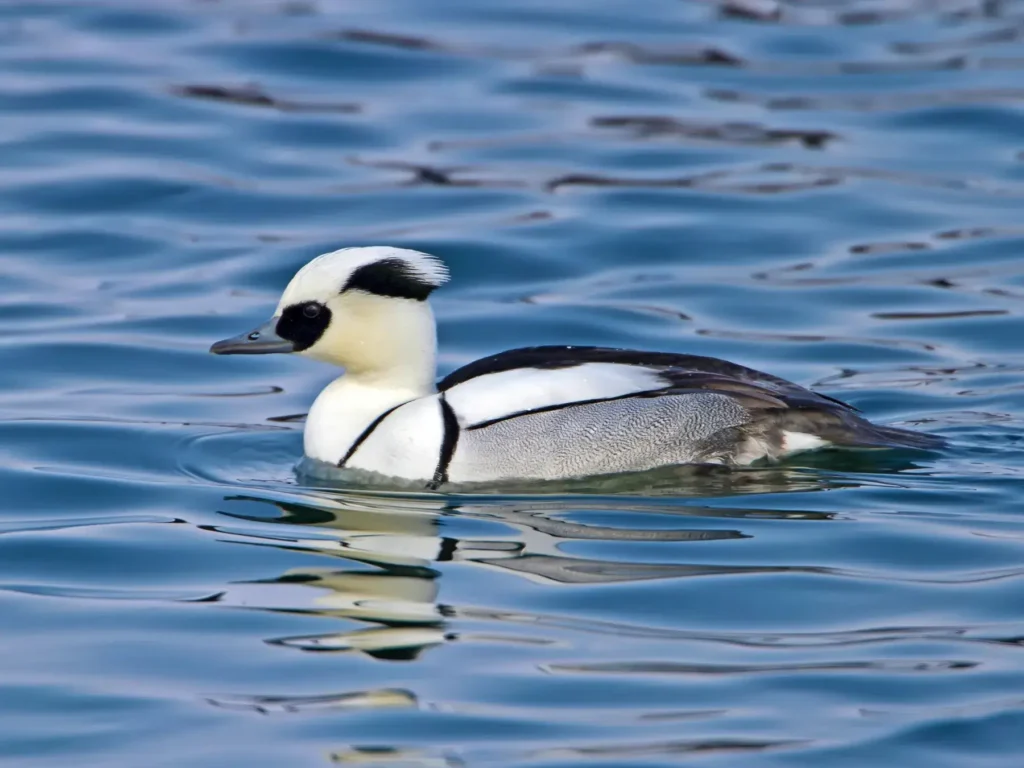
The male Smew takes white to the next level. Its chest is bright white, blending into an almost entirely white body broken only by thin black lines and patches. Think of it as a “panda duck” in reverse. The Smew is a winter visitor in much of Europe and Asia, breeding in northern forests near lakes. Unlike many ducks, they are quite shy and often feed in quiet lakes and slow rivers, diving for fish and aquatic insects.
10. Common Eider (Male)
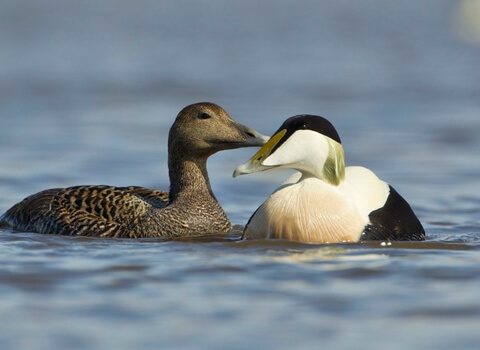
The male Common Eider has a clean white chest that blends into its pale back, sharply contrasted by a black cap and belly. From a distance on cold northern coasts, that white chest is one of the first things you notice. One of the most fascinating things about this species isn’t its appearance—it’s its feathers. Eiders are famous for producing eiderdown, the soft insulating feathers collected from nests and used for high-end bedding. They nest in Arctic and sub-Arctic coastlines and rely heavily on marine mollusks like mussels for food, diving deep to pry them from rocks.
11. King Eider
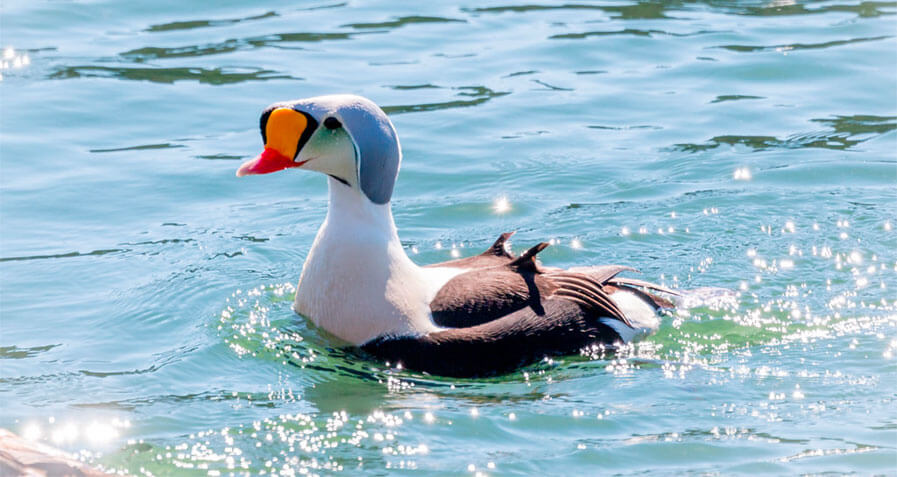
Male King Eiders also show a white chest, though it’s framed by a striking mix of black sides, a pale blue head, and a bold orange shield at the base of the bill. These sea ducks are true Arctic travelers, spending winters in icy waters where few species dare to go. They dive for clams, snails, and other sea creatures on the ocean floor. Their migration routes take them thousands of kilometers between tundra breeding grounds and coastal wintering sites.
12. Swedish Blue Duck
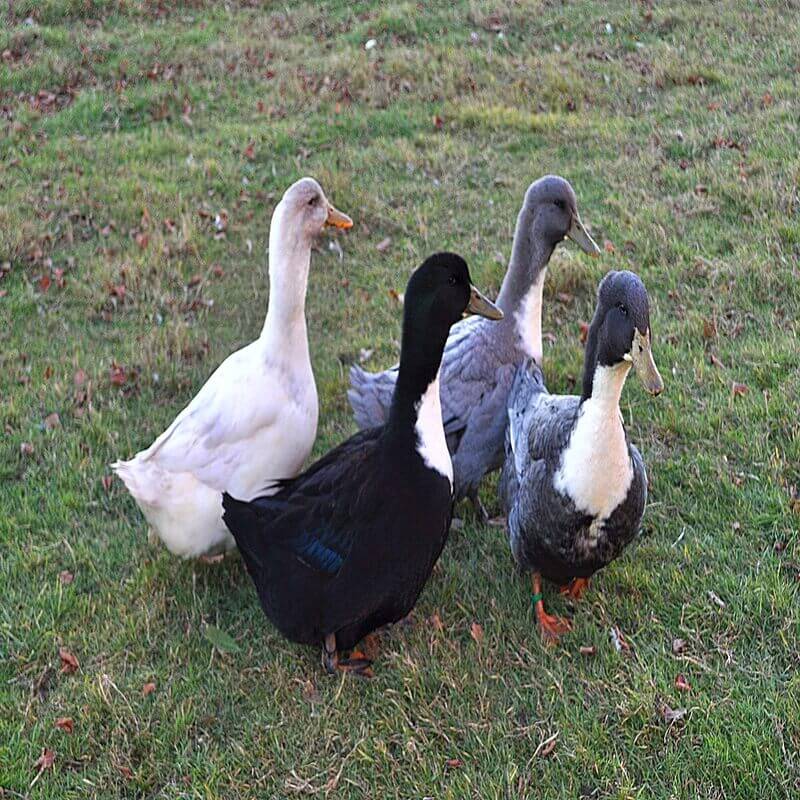
The Swedish Blue Duck isn’t as flashy, but males often have lighter or whitish chests contrasting with their slate-blue or gray bodies. Some have fully white breasts, especially in certain color variations. They are good layers and hardy in cold climates, making them popular on small farms. Swedish Blues are also calm, friendly, and often kept in mixed flocks, adding both beauty and practicality to farmyards.
13. Long-tailed Duck
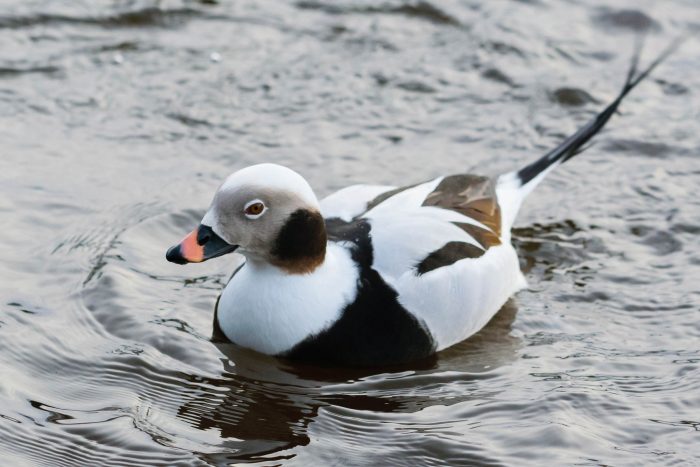
In winter plumage, male Long-tailed Ducks display a white chest that stands out against their darker backs and sides. Their plumage changes with the seasons, but that bright chest is a dependable feature during colder months. These ducks are exceptional divers—among the deepest-diving of all ducks—reaching depths of over 200 feet to forage on shellfish and crustaceans. They winter on cold coastal waters and produce one of the most musical calls of any sea duck, a yodeling sound that carries across the waves.
14. Manky Mallards
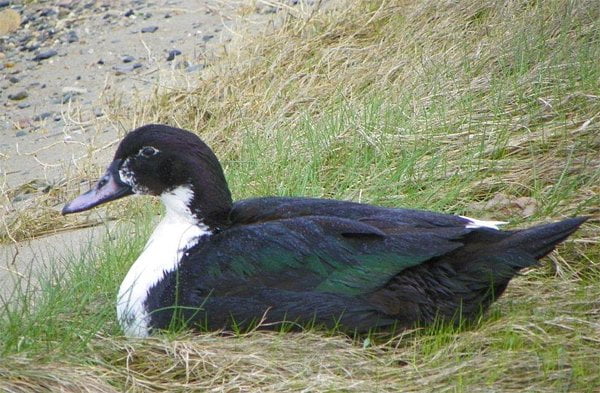
Manky Mallards are domestic or hybrid mallards featuring unusual color variations and markings that differ from the classic wild mallard appearance. Their plumage can range from mottled browns and whites to smoky grays, blues, or even pied patterns, created through selective breeding or interbreeding with other duck species.
15. Some Muscovy Ducks
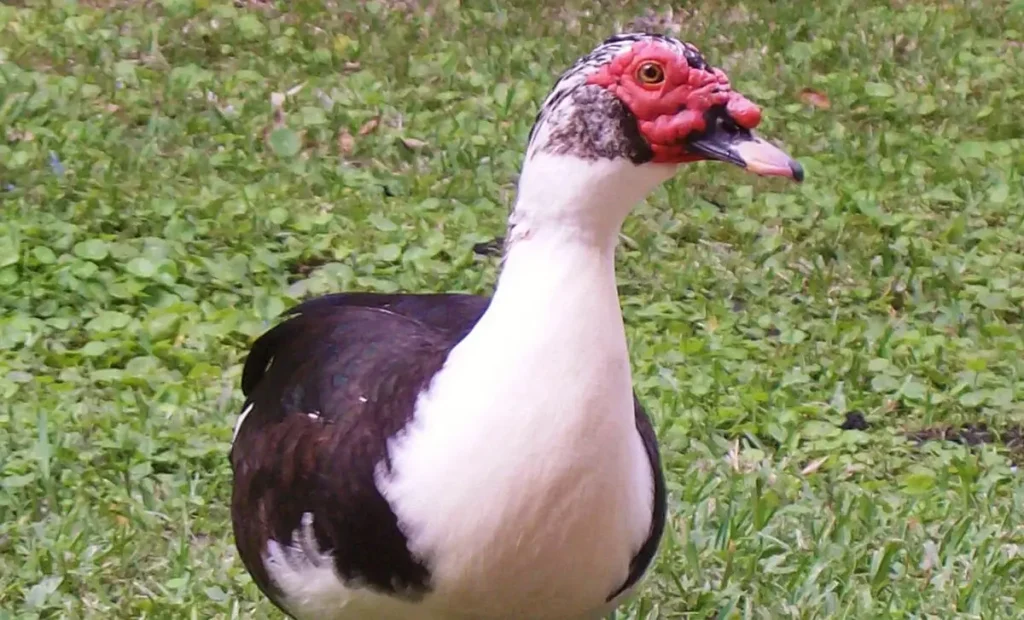
Not all Muscovy Ducks look the same. While many are known for their dark, often blackish plumage with iridescent green or purple tones, others may display white, chocolate, blue, or mixed-color feathers. Their facial caruncles also vary in size and color, giving each bird a distinct appearance. This natural variation makes Muscovies one of the most visually diverse domestic duck breeds.
